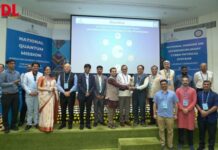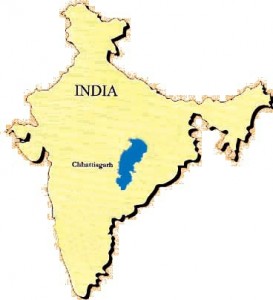NIIT’s computer literacy programme
NIIT is looking at expanding its K-12 computer literacy campaign to schools across all the states of India. The company now covers 4,200 schools in both the public and private domains. The company is looking for partnerships with all the states to extend the programme. At present, the company offer this programme in Assam Chhattisgarh, Karnataka, Tamil Nadu, Andhra Pradesh, Meghalaya and West Bengal.
Computer education for 10,000 schools in Andhra Pradesh
The State Government of Andhra Pradesh is chalking out plans to introduce computer education in 10,000 zilla parishad and Government high schools. The Government is also evolving ways to change education curriculum to suit the needs of the industry.
Dell’s community reach programme
Dell Corporation has initiated a community reach programme in Hyderabad, inaugurated at the HOPE Foundation, which is backed by funds from Dell Foundation. The centre is equipped with 30 Dell established schools would be called Bharti Schools and the company plans to spend INR 10-15 lakh in
establishing them. Another INR 5-7 lakh (0.1 million) are expected to be spent as operational expenses.
Government of India plans a mega school online The Human Resources
Development Ministry in India plans to set up a one-stop education portal for nearly 500 million users in both formal and informal systems, spread to the remotest corners of the country and capable of handling nearly 10 million simultaneous web sessions. The scheme will initially start as a pilot project in Delhi from July covering one lakh senior secondary students and those in the first year of professional or graduate courses. It will eventually go on build a database on the capabilities of 500 million students in the country. Sitting at
home or school, a student will not only be able to hone her knowledge in a particular subject but could also seriously pursue areas of interest outside the curriculum.
24×7 Learning to tie up with engineering colleges
24×7 Learning Solutions, a learning management technology company, has created a separate Academic Solutions Group to serve as a finishing school for engineering graduates and is eyeing overseas markets by establishing an Overseas Solutions Group. The company has committed investment of about USD10 million in its expansion and the creation of these services groups is aimed at tapping new segments. desktop computers, and will impart computer education to under-served students of the twin cities. The approach is to give under-served students the necessary tools to compete on equal terms. The centre will bring in technology that will allow imparting of knowledge. Dell
works on community outreach initiatives under h.u.g that stands for ‘Helping U Grow.’
Rediff iLand to offer Moblogs
Rediff.com India Ltd launched Rediff iLand, the first blogging service in India to introduce Moblogs. Now users can upload a picture or text directly from a mobile or any handheld device into their blogs. This service will allow users to blog from anywhere. Rediff iLand also allows users to customise their blogs
in several ways. Bharti group to spend INR 2 billion on primary education
projects
Bharti group of companies,
one of the largest telecom operators in India has announced a corpus of INR 2 billion, which would be spent on setting up primary schools around the country. The project would be carried out through the company’s Bharti
Foundation that aims at establishing a few hundred schools over the next 18-20 months. Investors in this group, Vodafone and Warburg Pincus have also supported the cause and would be playing a role in this project. The Foundation would also setup Teachers’ Training facilities throughout the country to improve the level of competence in teachers who would be teaching at these primary schools. These newly
Students to handle e-Governance in Indian state
Engineering students in Karnataka will now handle e-Governance initiatives of the state government. In a novel scheme aimed at addressing e-Governance glitches faced by several government departments, the Board for IT Education Standards (BITES) in association with the IT department and IBM has launched
Project INVITE (Initiative to Nurture a Vibrant Information Technology Ecosystem). Over 400 students are working on 24 project scenarios for 22 government departments. More than 100 faculty members have been trained to help students with the projects.
Now prepare for IIT, JEE online
Indiatimes.com, India’s leading Internet portal is now providing online testing services, under its knowledge brand – Indiatimes Mindscape Test Centre. This service allows students to take a number of practice tests for competitive exams like IIT JEE, CBSE PMT, BITSAT and AIEEE at a very nominal cost. The service will very shortly be extended to various other competitive exams, including CAT, GMAT, GRE, TOEFL and also Xth nd XIIth boards. National Knowledge Commission calls for more varsities
National Knowledge Commission
Chairman Sam Pitroda says that there should be a 15-fold increase in the
85% mobile telephony, broadband to all schools in India; IT minister gives fillip to education
All the Secondary and Higher Secondary Schools in India will be covered by broadband by the year 2007. Educational software for Class I to XII and training software for ITIs will also be made available for access through the Internet. These are among few other announcements Dayanidhi Maran, Minister of Communications and Information Technology, India has come up with recently, while listing out the new thrust areas for his ministry. Maran announced 85 per cent of the geographical area of the country would be covered by mobile telephone by the year 2007. 250 million connections would be provided by the year 2007 and further 500 million connections by the year 2010, all paving the way for easy mobile learning to take place.
Department of Information Technology has already released software tools and
fonts in 3 Indian languages, namely, Tamil, Hindi and Telugu in the public
domain. Software tools and fonts in 2 more languages, i.e., Punjabi and Urdu are
now ready for release. 17 other Indian languages are expected to be covered by
2007. The other things announced in this line include Indian language webbrowser to bring the benefit of all knowledge available on the web to the rural masses. Educational software for Class I to XII will be made available as approved by the Human Resource Development Ministry. Indian language
domain names on the Internet too will come a reality soon. number of
universities in India for building human resources in the country. The number of universities will have to be increased from the 350-odd to about 5,000. Pitroda emphasised the need for the number of youths studying in universities to go up from the present 8 per cent to at least 10 or 15 per cent, which
could only be achieved through more institutions of higher education. He has already discussed the matter with the Prime Minister Manmohan Singh and the commission is likely to submit a report in the next three months.
Oracle Academy to benefit Delhi Public schools through collaboration
Marking the first phase in the Oracle Academy and Delhi Public School (DPS) Society partnership, Oracle and DPS are currently hosting their firstever Oracle Academy training event in India. The partnership and corresponding training event are designed to prepare teachers to deliver Oracle Academy curriculum to their students in order to help students prepare for technology careers and higher education. The event kicks off a train-the-trainer model for teacher preparation that will help to rapidly introduce the Oracle Academy programme into new schools in India. The Oracle Academy, part of Oracle’s Education Initiatives, support the needs of the educational institutions by helping to provide schools, districts and ministries, with the tools required to prepare students for 21st century careers. Students can learn database design and
programming skills, as well as vital business skills such as criticalthinking, problem-solving, resumebuilding and interviewing, group
collaboration and project management skills used throughout the IT industry in companies around the world.





















